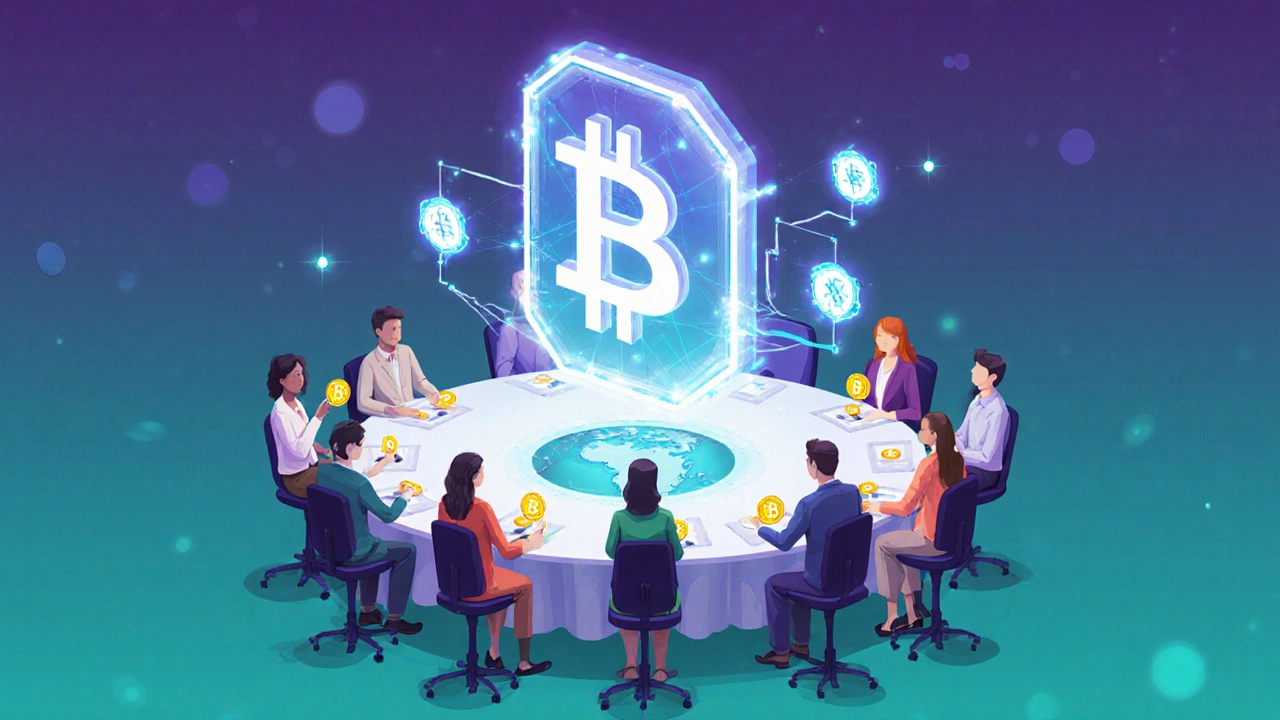Blockchain Governance Explained
When working with Blockchain Governance, the framework that lets participants propose, vote on, and enforce changes within a blockchain protocol. Also known as crypto governance, it blends technology, economics, and community dynamics to keep a network secure and adaptable. Blockchain governance isn’t just a buzzword; it governs everything from minor parameter tweaks to major protocol upgrades. Two core tools drive this process: Governance Tokens, digital assets that grant voting rights and economic incentives to holders and the Bitcoin Block Reward, the newly minted bitcoins miners receive for adding a block, which also influences miner behavior and network security. Emerging structures like Decentralized Autonomous Organizations (DAOs), member‑run entities that automate governance rules on‑chain rely heavily on On‑Chain Voting, a transparent, tamper‑proof process where token holders cast ballots directly on the blockchain. Together these elements form a web of decision‑making that keeps crypto ecosystems alive and evolving.
Key Concepts in Blockchain Governance
At its core, blockchain governance encompasses the mechanisms that let a decentralized community coordinate change. Governance tokens act as both a stake and a voice: the more tokens you own, the heavier your voting weight, and the higher the potential reward for supporting proposals that boost network value. This dual role mirrors the Bitcoin block reward system, where miners earn fresh coins as a direct incentive to secure the chain; similarly, token‑based voting rewards participants who align with the network’s long‑term health. DAOs take this a step further by codifying rules into smart contracts, turning every vote into an executable action without needing a central authority. On‑chain voting then ties everything together, offering a transparent record that anyone can audit, which reduces the risk of hidden backroom deals. The interplay between these entities shows why strong token economics, clear voting procedures, and solid smart‑contract design are essential for a thriving governance model.
Understanding these building blocks helps you see why some projects move fast while others stagnate. A well‑designed token distribution can prevent power concentration, while a clear on‑chain voting timeline ensures proposals aren’t left in limbo. Meanwhile, DAOs provide the flexible framework needed for community‑driven innovation, from funding new development to adjusting fee structures. Below you’ll find a curated set of articles that dive deeper into each piece of the puzzle: how Bitcoin’s block reward shapes miner incentives, the risks and rewards of governance tokens in DeFi, and real‑world DAO case studies. By the end, you’ll have a practical sense of how decisions are made, who holds the power, and what tools you can use to participate in the next wave of blockchain evolution.

What Is a DAO in Crypto? A Simple Guide
- by Zephyr Blackwood
- on 25 Sep 2025
A clear, beginner-friendly guide that explains what a DAO is in crypto, how it works, its benefits, risks, real examples, and steps to join or create one.
